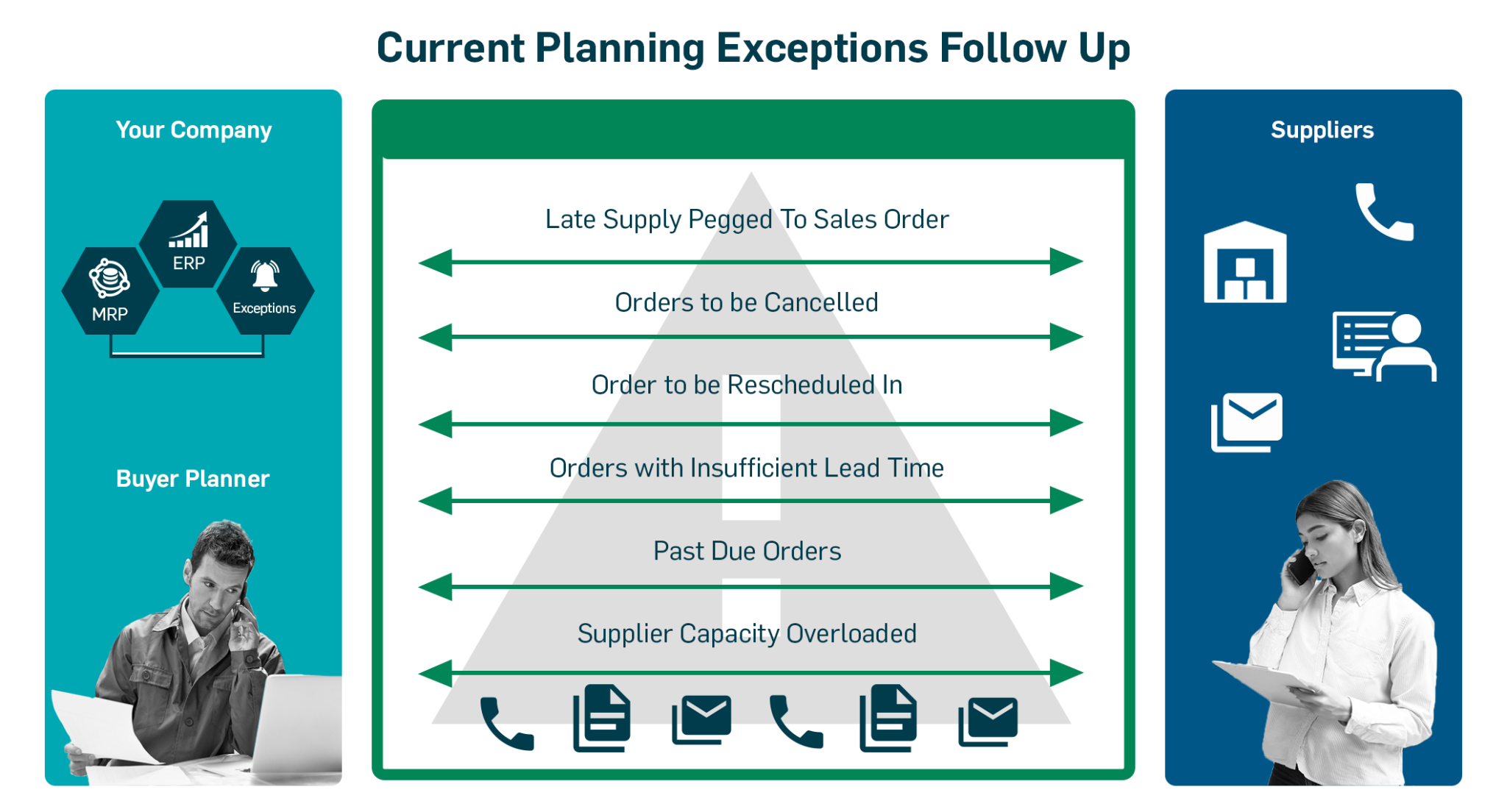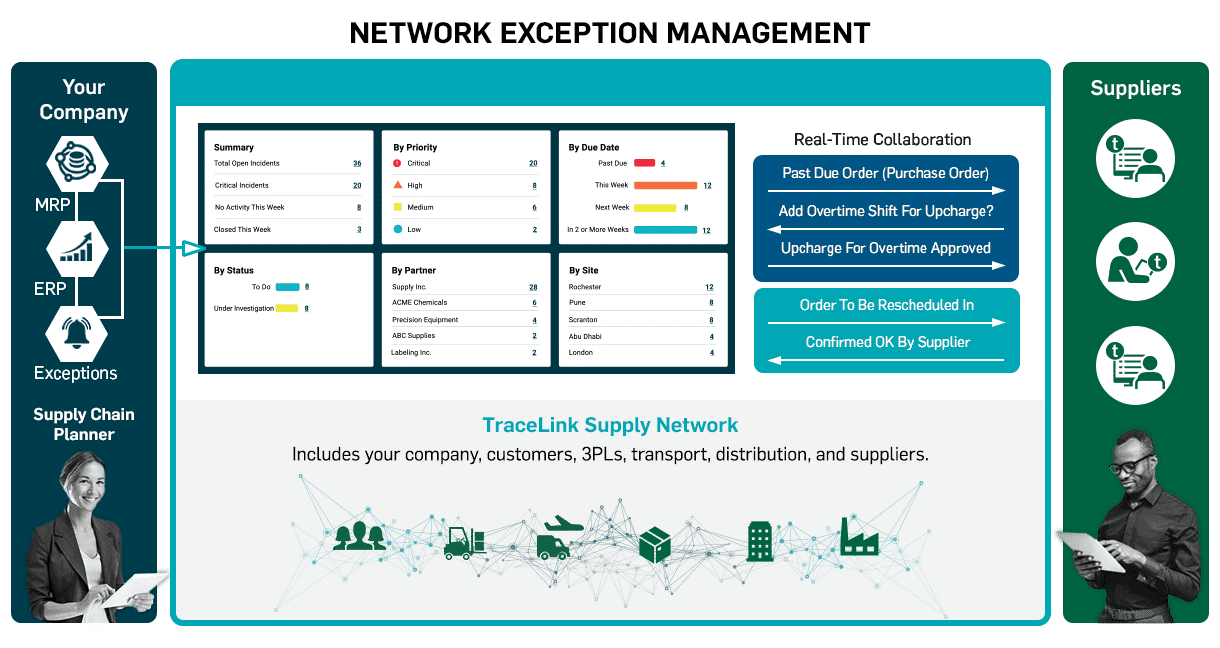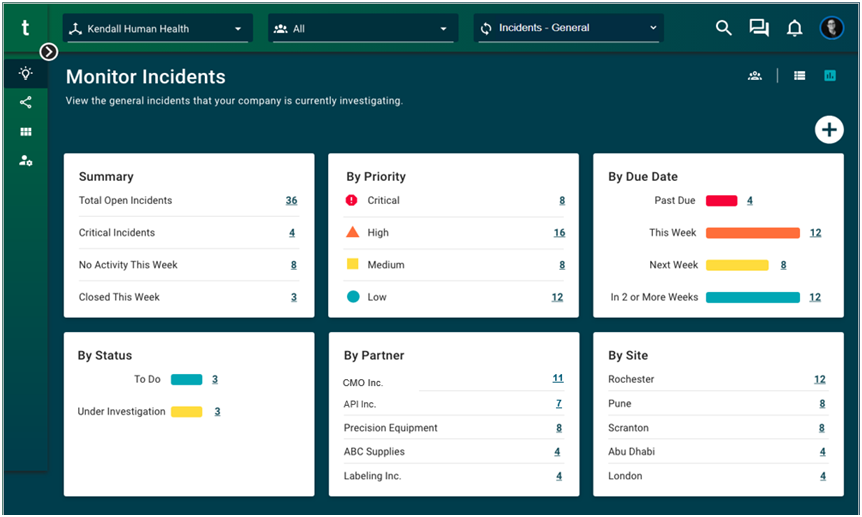Table of contents
Planners have one of the most challenging jobs in the supply chain. Constantly in need of the latest information on issues and exceptions, successful planners depend on collaborative contributions from teammates in sourcing, supplier management, manufacturing, logistics, quality, sales, and suppliers’ teams to help them identify, resolve, and share the impact of costly exceptions. Unfortunately, most planners do not have access to supply chain work management capabilities to connect with suppliers in real time to resolve plan exceptions.

Any exception, even for a small component from a tier 2 supplier, can shut down a production line—it could be as seemingly small as a label or a bolt that was missed in the MRP exception report. The planner’s biggest challenge is working through issues and exceptions resulting from the last MRP run to avoid shutting down a production line or missing a customer order. Whether you run MRP once per week using the planning capabilities of the ERP system, or even more frequently using the advanced planning capabilities of a supply chain planning application, exceptions against purchase orders must be promptly reviewed and followed up on with suppliers. Failure to quickly communicate changes with suppliers can lead to a variety of issues including material shortages, late deliveries, and excess inventory. With today’s unprecedented supply chain disruptions, it is more important than ever to put better processes in place to collaborate with suppliers on exceptions, and to separate routine changes from issues originating from global shortages.
While general market volatility will always create exceptions, too many exceptions indicate that the supply plan and the supply chain are not aligned, and more exceptions will lead to lower supply accuracy. In the demand planning process, the accuracy of the demand plan is measured by forecast error. Although the supply plan has no formal accuracy measurement, the number of exceptions can be used as a measurement of supply accuracy. Failure to maintain a high level of supply accuracy will result in production shortfalls, late or missed customer orders, and higher costs as manufacturing scrambles to work around material shortages. This failure will negatively impact key manufacturing metrics including order fill rates and schedule attainment. Preventing this failure makes the exception resolution process a high-priority process for digitalization.
Resolving exceptions to purchase and subcontract orders requires that planners review exceptions, consolidate exceptions by supplier—often in a spreadsheet—and email the spreadsheet to the suppliers and follow up with a phone call. It is often necessary for planners to chase after suppliers to get the answers they need to address the exception. The MRP run can produce thousands of exceptions and, as a result, the exception resolution process is very tedious and often consumes most of the planner’s week. While some manufacturers have deployed supplier portals to communicate these changes, portals often result in low adoption by partners and more complex and critical changes still require direct follow-up with the suppliers.
A better way to manage exceptions impacting the supply chain planning function
What if exception messages could be communicated automatically to your network of suppliers on a multienterprise platform that enabled real-time collaboration, enabling you to resolve exceptions as quickly as possible directly from your planning system?

What if those exceptions could be prioritized for each supplier, assigned to different team members to triage, and measured based on time-to-close and frequency per supplier?
What if the collaborative work management solution could include tier 2 suppliers and logistic providers in a multi-company process to develop alternatives for more complex exceptions?
What if ERP or Advanced Planning Systems could be integrated with collaborative work management to route exceptions directly to suppliers, and updated automatically when resolution occurs?
TraceLink has the answer to these what-ifs. TraceLink Supply Chain Work Management is a multienterprise work management solution that connects you and your suppliers in real time to support exception resolution. With Supply Chain Work Management, exceptions are captured as an incident and routed to the supplier to begin the resolution process. Instant notifications alert your suppliers that you need confirmation that they can accommodate the changes or begin collaboration to find an alternative resolution.
In today’s lean supply chains, an increase in order quantity or a product mix change can be especially challenging because it will likely require more components and assemblies from multiple levels of the bill of materials. As a planner, you know that failure to get even a single component can cause a missed or late customer delivery date. With Supply Chain Work Management, you can connect directly with the suppliers whose components were identified in the exception as potential material shortages. Multiple suppliers will likely need to respond before you can move forward with the increase in production, so Supply Chain Work Management enables you to link incidents to track them as a group. These exception incidents can also be prioritized as “high” or “critical” to ensure prompt follow-up. Real-time dashboards enable your team and your suppliers’ teams to see assigned priorities and track resolution progress—everyone is working in the same system with shared data. It also enables the creation of multi-company tasks to extend collaborative processes to additional partners and tier 2 suppliers to resolve more complex exceptions.
By creating an incident for critical exceptions, exception follow-up is assigned to a specific member of the planning team and the corresponding member of the team at the supplier. Your supplier is immediately notified, and the resolution process begins. TraceLink manages all supplier onboarding so your supply network is always available. You can assign priorities and the expected resolution date. Given that you may have numerous exceptions that need to be resolved with your top suppliers, the priority and expected resolution date ensures your team and your supplier’s team are aligned on which exception should be worked on first.

Companies that have deployed the Supply Chain Work Management solution have found that the structured, workflow-driven process it provides has reduced the time to resolve incidents by as much as 65%. For planners, this means exceptions are cleared much faster with reduced effort and potential manufacturing disruptions are minimized. For companies that use advanced planning applications capable of running scenario plans in minutes, it becomes essential to reduce the time and effort to resolve exceptions.
Eliminate exceptions permanently
Using a more structured process that tracks issue resolution and retains the history for further analysis enables you to identify recurring exceptions. As a planner dealing with exceptions daily, you are likely aware that there are many exceptions you see frequently. The challenge is that the time-consuming process of exception resolution does not leave you any extra time to compile the data on resolved exceptions and put corrective actions in place. With Supply Chain Work Management, you have the data at your fingertips to spot trends, identify recurring issues, and take steps to eliminate root causes and permanently reduce the number of exceptions to your plan.
For example, let’s use a problem all too familiar to planners—a past due order caused by inaccurate lead times. Inaccurate lead times are a systemic problem that will create exceptions up and down the product bill of materials and will recur until fixed. The issue is also likely to impact multiple products if it is a common component. It may even impact multiple suppliers if there is a business process defect in the methodology used for setting lead times.
Supply Chain Work Management retains the history of issues resolved with input from your subject matter experts and those at your suppliers. While the immediate resolution will be focused on resolving the exception and potential material shortage, the root cause can also be collected if known at the time. A review across closed material shortage exceptions enables you to determine how many of these shortages are essentially self-inflicted because of inaccurate lead times. The good news is that once discovered, fixing an inaccurate lead time only requires a small update in the ERP system and the next MRP run will use accurate lead times that eliminate future exceptions.
TraceLink Supply Chain Work Management is a quick and easy way to harness the power of your planning team’s expertise and that of your suppliers so you can all navigate these difficult times and get ahead of your competition. This will enable your supply chain planning organization to overcome the current supply chain challenges, acquire new customers, and grow revenue.
Learn more in our Supply Chain Work Management Resource Center.





